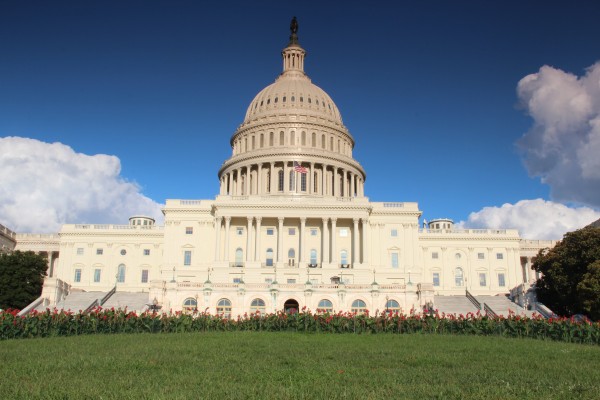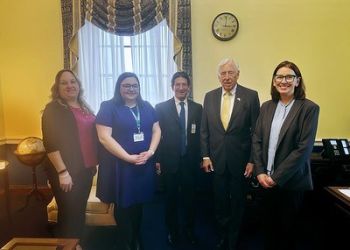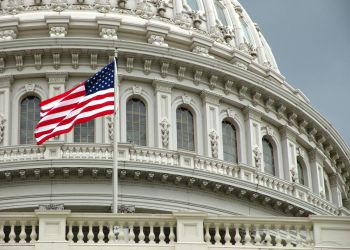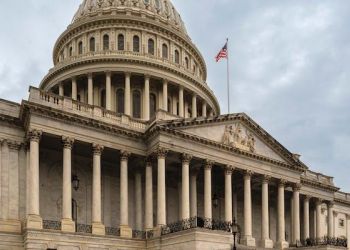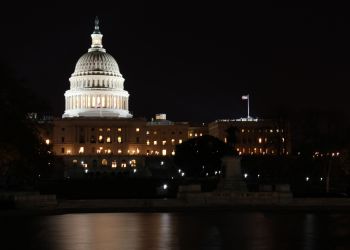This week, President Biden released his fiscal year (FY) 2023 budget request. Although the president’s budget is not a binding document – Congress ultimately allocates federal funding – it does provide important insight into the administration’s priorities and may be considered during congressional negotiations. Because Congress only just passed FY22 appropriations a few weeks ago, the President’s FY23 Budget does not account for final FY22 allocations.
The budget includes a request for $127.3 billion for the Department of Health and Human Services (HHS), a 15% increase from the enacted FY22 level. Within HHS, the budget proposes $10.675 billion for the Centers for Disease Control and Prevention (CDC), an increase of $2.23 billion from FY22. Of particular interest to NACCHO, the budget proposes $600 million for public health infrastructure and capacity (an increase of $400 million over FY22) and $200 million for CDC’s Data Modernization Initiative (double the FY22 level). The budget also proposes $638 million for the Public Health Emergency Preparedness Cooperative Agreements, less than the final FY22 appropriation. CDC has indicated they did not intend to cut any programs and that proposals under FY22 levels were the result of not having the final FY22 appropriations when writing the budget.
The President’s Budget also includes an $81.7 billion proposal to establish a five-year mandatory pandemic preparedness program that would span multiple agencies within HHS including the Office of the Assistant Secretary for Preparedness and Response (ASPR), CDC, National Institutes of Health (NIH), and Food and Drug Administration (FDA). Under the proposal, CDC would receive $28 billion in addition to annual appropriations to strengthen the public health system. Within that funding would be:
- $2 billion for public health workforce
- $1 billion for public health data modernization
- $2.35 billion for public health laboratory infrastructure improvements
- $5.7 billion for global medical countermeasures capacity development
- $1.15 billion for global health security capacity
- $200 million for initial rapid response
Congress would need to pass authorizing legislation to establish this mandatory funding program and so far, lawmakers have not commented on their interest in pursuing this proposal.
The President’s Budget proposes the following funding for other programs of interest to local health departments:
Centers for Disease Control and Prevention
- Immunization and Respiratory Diseases - $1.2 billion, an increase of $332 million from FY22.
- 317 Immunization Program - $993 million, an increase of $342 million from FY22 to help transition to a sustainable program to support future COVID-19 vaccination and enhance support in the human papilloma virus (HPV) vaccination efforts.
- Influenza Planning and Response - $251 million, an increase of $40 million from FY22 to improve effectiveness of and reduce barriers to seasonal influenza vaccination.
- HIV, Viral Hepatitis, STD, and TB Prevention - $1.47 billion, a $117 million increase from FY22.
- HIV Prevention and Research - $1.1 billion, an increase of $113 million from FY22.
- Viral Hepatitis Prevention - $55 million, an increase of $14 million from FY22.
- STD Prevention - $162 million, a decrease of $2 million from FY22.
- TB Prevention - $135 million, same as FY22.
- Infectious Diseases and the Opioid Epidemic - $19.5 million, an increase of $1.5 million from FY22.
- Emerging and Zoonotic Infectious Diseases – $703 million, an increase of $10 million from FY22, with $52 million from the Prevention and Public Health Fund (PPHF).
- Emerging Infectious Diseases - $193 million, a decrease of $2 million from FY22.
- Food Safety - $65 million, an increase of $3 million from FY22.
- Epidemiology and Laboratory Capacity Grants - $40 million, same as FY22.
- National Healthcare Safety Network - $21 million, same as FY22.
- Advanced Molecular Detection - $30 million, a decrease of $5 million from FY22.
- Chronic Disease Prevention and Health Promotion – $1.6 billion, an increase of $3 million from FY22, with $255 million from the PPHF.
- Racial and Ethnic Approaches to Community Health – $64 million, a decrease of $2 million from FY22.
- Good Health and Wellness in Indian Country - $22 million, a decrease of $1 million from FY22.
- Tobacco - $242.5 million, an increase of $.5 million from FY22.
- Million Hearts – $4 million, same as FY22.
- Cancer Prevention and Control - $431 million, an increase of $45 million from FY22.
- Safe Motherhood/Infant Health - $164 million, an increase of $81 million from FY22.
- Diabetes Prevention Program - $29 million, an increase of $4 million from FY22.
- School Health - $50 million, an increase of $33 million from FY22.
- Birth Defects, Developmental Disabilities, Disability and Health - $195 million, an increase of $18 million from FY22.
- Surveillance for Emerging Threats to Mothers and Babies - $35 million, an increase of $22 million from FY22.
- Racial and Ethnic Approaches to Community Health – $64 million, a decrease of $2 million from FY22.
- Environmental Health - $402 million, an increase of $174 million from FY22, including $17 million from the PPHF.
- Environmental Health Activities – $176 million, an increase of $128 million from FY22.
- Climate Change – $110 million, an increase of $100 million from FY22.
- Childhood Lead Poisoning - $90 million, an increase of $49 million from FY22.
- Asthma - $30 million, the same as FY22.
- Environmental and Health Outcome Tracking Network - $34 million, same as FY22.
- Injury Prevention and Control - $1.3 billion, an increase of $585 million from FY22.
- Intentional Injury - $454 million, an increase of $330 from FY22.
- Unintentional Injury - $9 million, same as FY22.
- National Violent Death Reporting System - $34.5 million, an increase of $10.5 million from FY22.
- Injury Prevention Activities - $29 million, same as FY22.
- Opioid Abuse and Overdose Prevention - $713 million, an increase of $222 million from FY22.
- Public Health Preparedness and Response - $842 million, a decrease of $20 million from FY22.
- Public Health Emergency Preparedness (PHEP) Cooperative Agreements – $638 million, a decrease of $75 million from FY22.
- Public Health and Scientific Services - $799 million, an increase of $107 million from FY22.
- Public Health Data Surveillance/IT Systems Modernization - $200 million, an increase of $100 million from FY22, used for continuing to modernize systems, and recruit and retain skilled data scientists to improve public health data including at the National Center for Health Statistics, and State, local, tribal and territorial partners.
- Public Health Workforce Development - $106 million, an increase of $45 million from FY22.
- Surveillance, Epidemiology, and Public Health Informatics - $298 million, a decrease of $114 million from FY22.
- Health Statistics - $182 million, an increase of $2 million from FY22.
- CDC-Wide Activities and Program Support - $966 million, an increase of $472 million from FY22.
- Public Health Leadership and Support - $124 million, an increase of $10 million FY22.
- Preventive Health and Health Services Block Grant – $160 million, same as FY22.
- Infectious Disease Rapid Response Reserve Fund - $35 million, an increase of $15 million from FY22.
- Public Health Infrastructure and Capacity- $600 million, an increase of $400 million from FY22.
- Vaccines for Adults- $2.5 million for FY23 out of $25 billion over the next ten years to provide uninsured adults with access to vaccines recommended by the Advisory Committee on Immunization Practices at no cost.
Assistant Secretary for Preparedness and Response (ASPR)
- Medical Reserve Corps - $6.24 million, same as FY22.
- Hospital Preparedness Program - $292 million, a decrease of $28 million from FY22.
- Biomedical Advanced Research and Development Authority - $828 million, an increase of $83 million from FY22.
- Strategic National Stockpile - $975 million, an increase of $130 million from FY22.
- Project BioShield - $770 million, a decrease of $10 million from FY22.
Health Resources and Services Administration (HRSA): $8.5 billion total, a decrease of $53 million from FY22.
- Community Health Centers - $1.8 billion, an increase of $100 million from FY22.
- Public Health and Preventive Medicine - $18 million, a decrease of $5 million from FY22, including an increase of $10 million for Public Health Training Centers.
- Maternal and Child Health Block Grant - $953 million, an increase of $206 million from FY22.
- Healthy Start - $145 million, an increase of $13 million from FY22.
- Ryan White AIDS Programs – $2.7 billion, an increase of $16 million from FY22.
- Part A Emergency Assistance (cities) - $669 million, a decrease of $32 million from FY22.
- Part B Comprehensive Care (states) - $1.3 billion, same as FY22.
- Part B AIDS Drug Assistance Program - $900 million, same as FY22.
- Ending the HIV Epidemic Initiative- $290 million, an increase of $168 million from FY22.
Department of Health and Human Services
- Title X Family Planning Program – $400 million, an increase of $114 million from FY22.
National Institutes of Health (NIH)
- Advanced Research Projects Agency for Health (ARPA-H) - $5 billion, an increase over the $1 billion appropriated in FY22. ARPA-H has yet to be authorized by Congress and lawmakers continue to debate if it should be housed in NIH or be its own independent entity within HHS.
The release of the President’s Budget will jump start the FY23 appropriations process. NACCHO Government Affairs will submit appropriations requests to Congress to advocate for resources to support local health departments.
